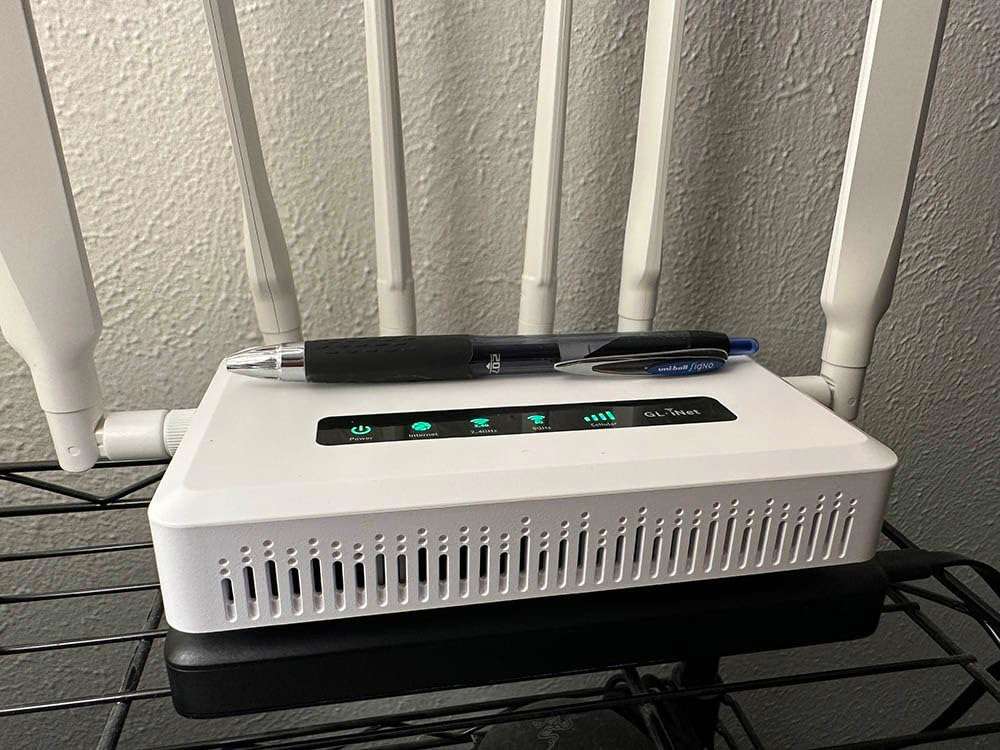
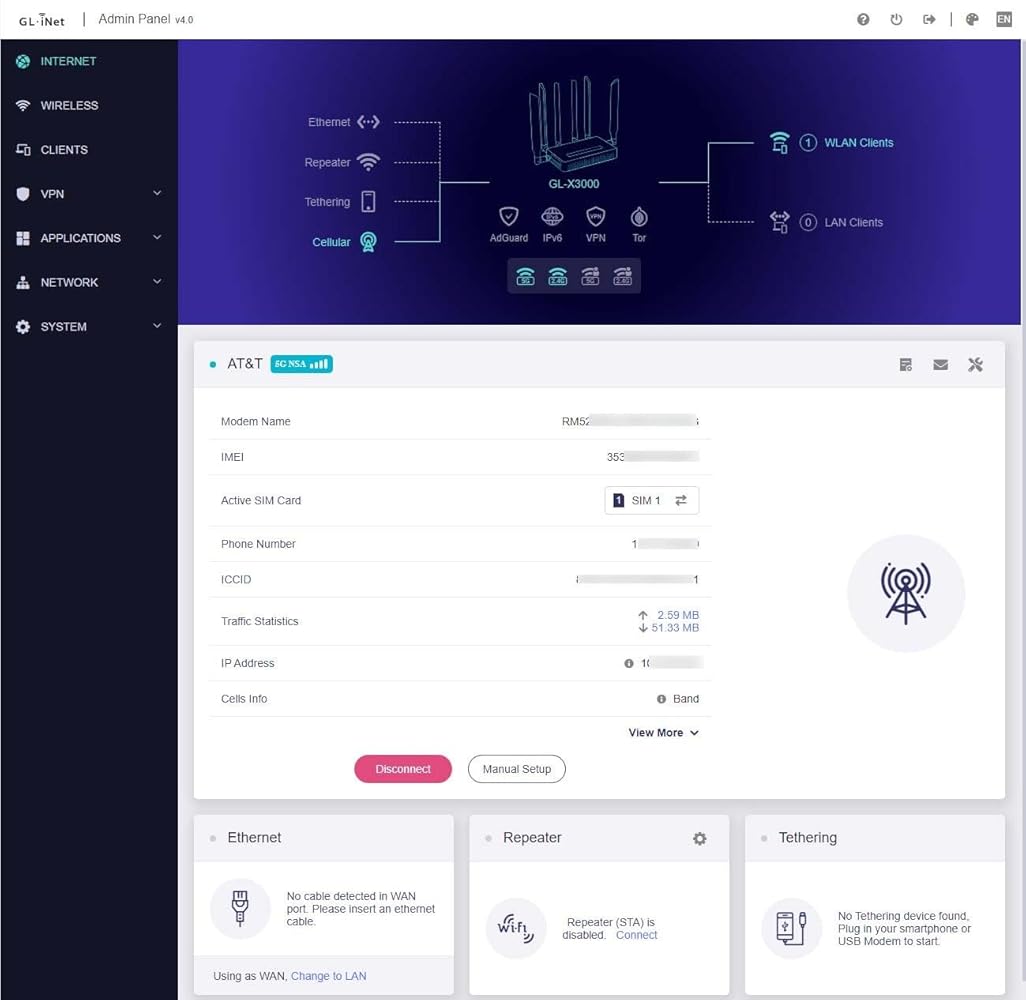
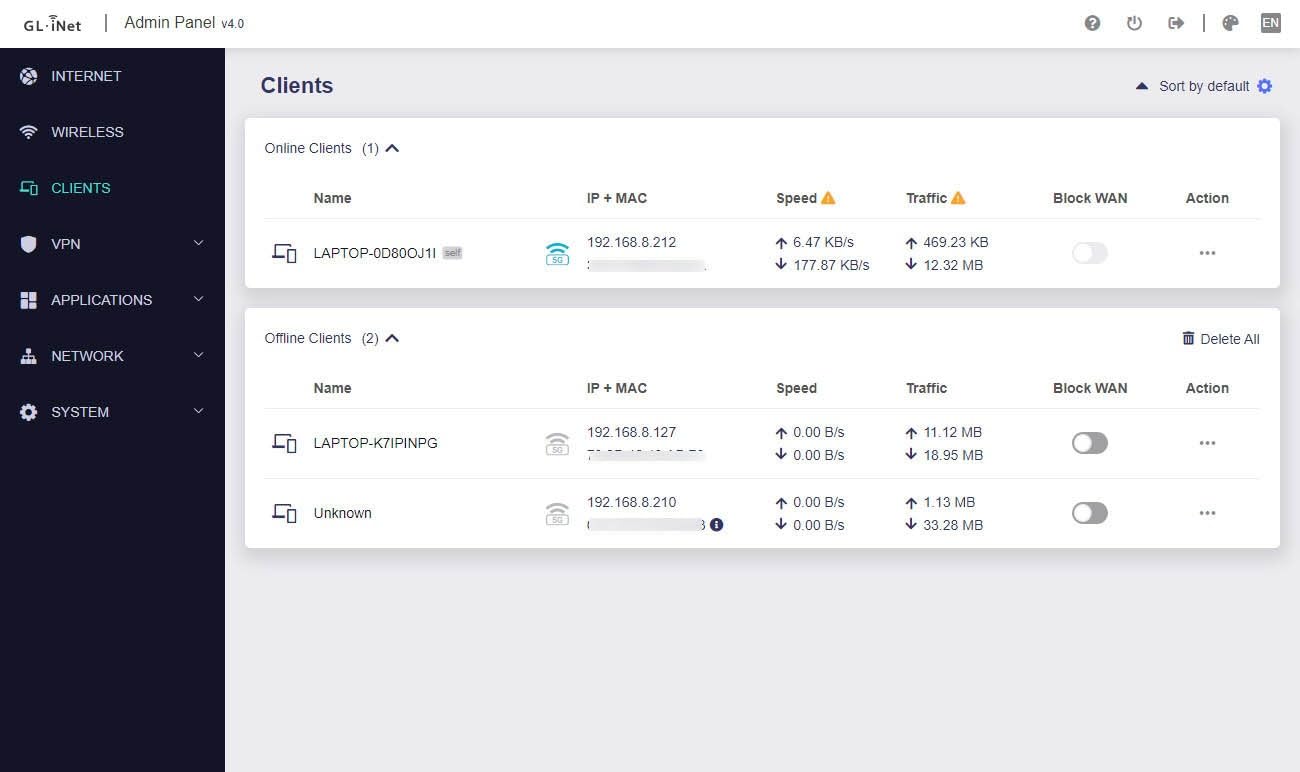
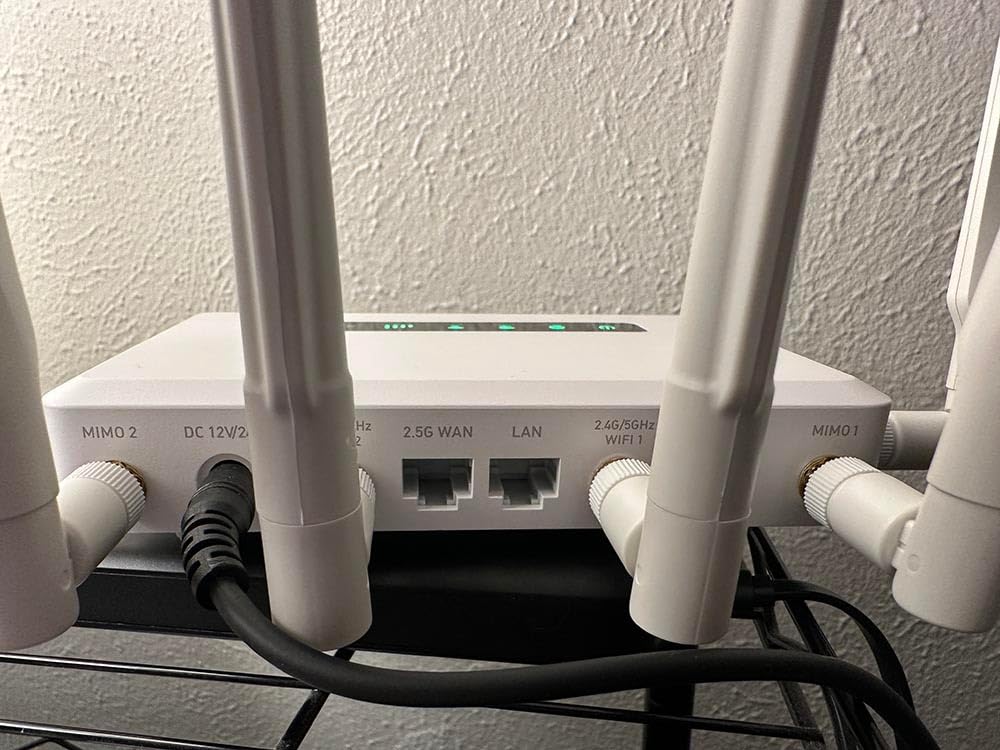
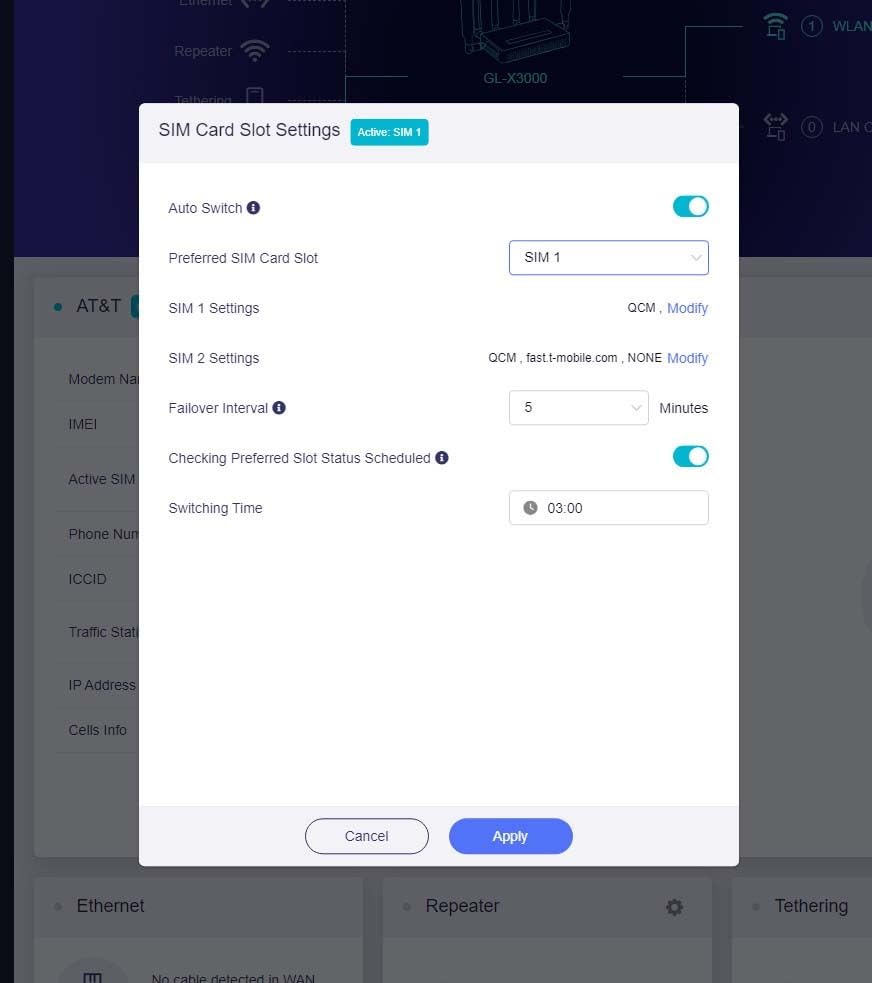
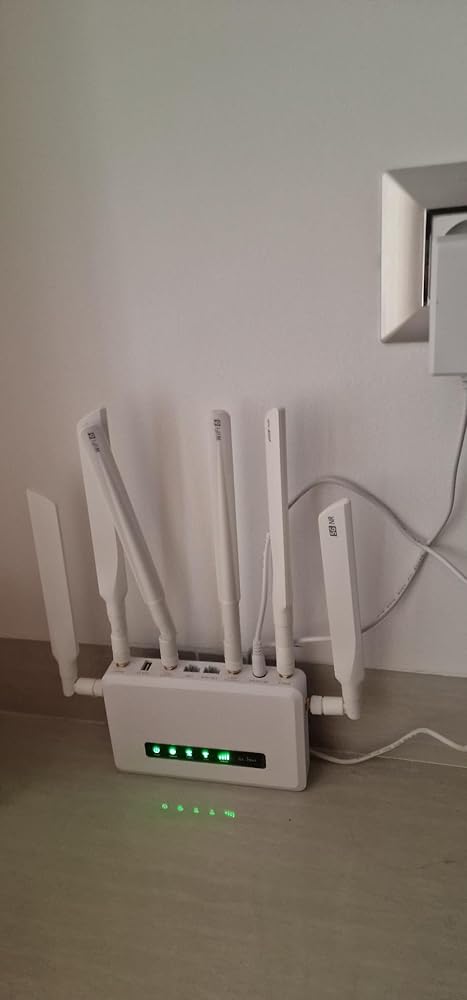
First Impressions & Build: Unboxing the GL-X3000 feels premium—detachable antennas, solid casing, and a compact footprint. The 6 antennas scream 'serious business,' but the lack of a built-in battery for portability is a missed opportunity. Pro tip: Pair it with a USB-C power bank for on-the-go use.
Speed & Connectivity: In my rural test spot, this beast pulled 200Mbps down/90Mbps up on T-Mobile’s 5G—way faster than my old LTE hotspot. But here’s the catch: carrier deprioritization can throttle speeds during peak hours (looking at you, budget MVNOs). The dual-SIM failover works flawlessly though—when AT&T faltered, it instantly switched to my T-Mobile SIM.
Router Quirks: As a modem? Brilliant. As a router? Meh. Smart home devices kept dropping on the 2.4GHz band, forcing me to use a secondary router (my Cudy CAT18 handled IoT better). Also, no combined SSID for dual-band WiFi means manually switching networks—annoying when streaming from phone to TV.
VPN & Customization: OpenWrt-based firmware is a tinkerer’s dream—WireGuard hits 300Mbps! But the learning curve is steep. I spent hours configuring tower locking and TTL settings to bypass carrier throttling (shoutout to Reddit forums).
The Verdict: At $400+, it’s pricey but unmatched for 5G travel/RV use. Just don’t expect flawless routing—keep a backup AP for smart homes. Bonus: The free 10GB SIM is clutch for testing coverage pre-road trip!

